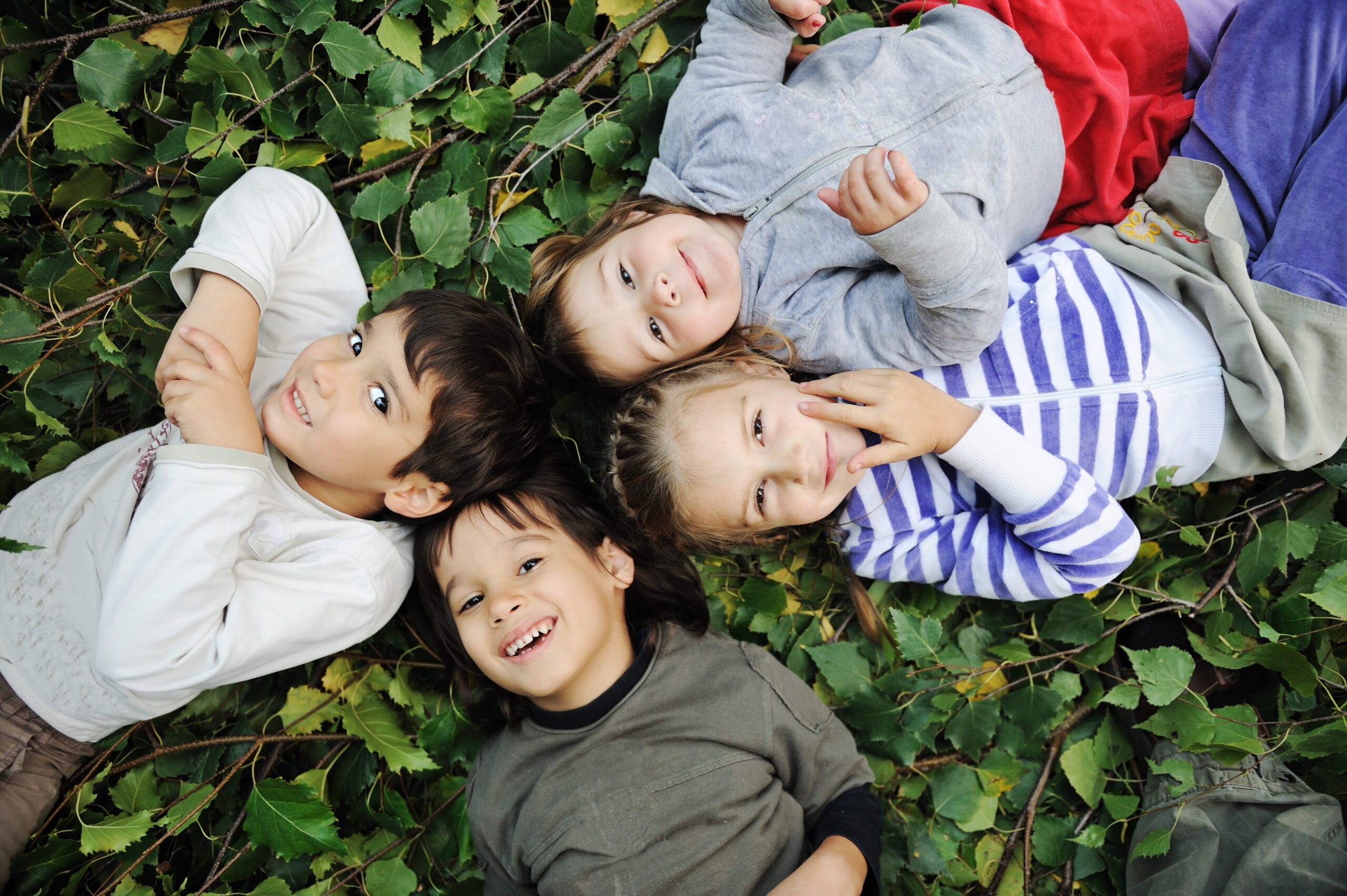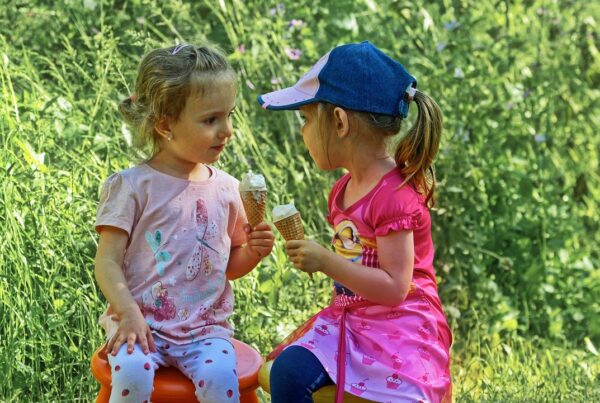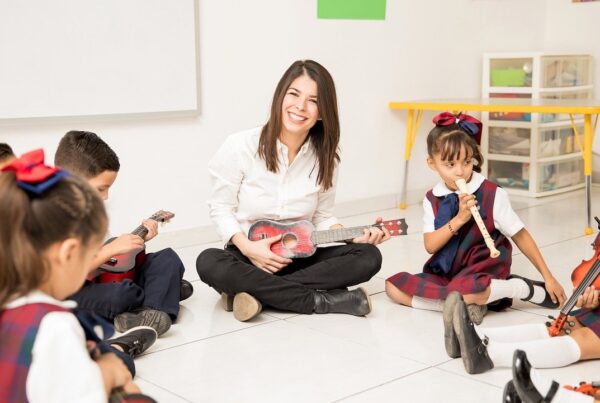Written by: Alancia King, B.S., Crystal Williams, Ph.D., Michaelene Ostrosky, Ph.D., & Robyn DiPietro, Ed.M.
Rothbart and Bates (2006, as cited in Yavuz-Müren et al., 2022) define temperament as inherent individual differences in emotionality (reactivity) and regulation, which are noticeable in early childhood. Temperament is shaped over time by development and experience and influences children’s social, emotional, cognitive, and attentional behaviors.
According to Yavuz-Müren, et al. (2022), there are four temperament profiles:
| Temperament Profile | Characterized By: |
| Negative Emotionality (Reactivity) | Being easily irritable, exhibiting negative moods considerably more than positive moods, and exhibiting intense adverse reactions such as distress when faced with limitations or new situations. |
| Positive Emotionality (Surgency) | Having a spontaneous/relaxed character, being highly sociable, approaching new situations with positivity, having high energy levels, feeling pleasure intensely, and exhibiting a lot of positive affect. |
| Behavioral Inhibition (Shyness) | Exhibiting high levels of alertness, caution, avoidance, and withdrawal in new situations (White et al., 2011). |
| Regulation (Effort Control) | Demonstrating control of self, persistence, and ability to regulate behaviors and emotions. |
Research has shown that a child’s temperament profile can affect their social competence and may lead to increased externalizing and internalizing behaviors. It is important to note that temperament profiles are not fixed and can change over time.
Next, you will be introduced to four children attending preschool for the first time with different temperament profiles and discover ways in which their temperament impacts their social interactions and behavior.
Case Study One: Benjy
Benjy knows all his letters and colors and can correctly do simple addition and subtraction when given manipulatives. Benjy exhibits traits of the negative emotionality (NE) temperament profile. Upon arriving at school, Benjy is usually in a negative mood and refuses to greet his teachers. He resists coming into the classroom and participating in daily activities, often by screaming or pulling away. When playing, Benjy often becomes angry when his peers try to use the same toys or materials as him. Benjy resorts to hitting, pushing, and yelling at his peers. When seeing his peers cry as a response to his behavior, Benjy exhibits signs of high levels of personal distress, such as pulling at his hair and, eventually, walking away, and ignoring the peer in distress. By the middle of the school year, most of Benjy’s peers avoid interacting with him to protect their safety.
Case Study Two: Claire
Claire is often referred to by adults as a social butterfly. Claire displays characteristics of the positive emotionality (PE) temperament profile. Upon arriving at school, Claire runs to hug her teachers and tell them all about her previous day. As Claire’s peers arrive, she smiles and waves at them, saying hello. Claire loves interacting with her peers and frequently initiates play. Teachers say that Claire never stays in one spot for too long but rather bounces around the classroom, engaging in different things with different people. When Claire approaches a peer to play, and they say no, she reacts by trying to get the rest of her peers to alienate them with her for the rest of the day. By the middle of the school year, Claire has some very close friends who she often leads in play. Other children are more reserved around her or become irritated with her insistence on initiating and controlling play.
Case Study Three: Justin
Justin loves being read to, knows all his letters, and can spell and read basic two and three-letter words. Justin’s temperament aligns with the behavior inhibition profile. Upon arriving at school, Justin hides behind his caregiver’s legs, cries while holding on tightly, and stares at the ground when greeted by his teachers. Throughout the school day, Justin stays to himself and rarely initiates social interactions. When teachers attempt to include him in daily activities, he hardly speaks or speaks very quietly without making eye contact. When his peers try to initiate play with him, he does not respond but instead exhibits high levels of anxiety, such as heavy breathing and becoming sweaty. By the middle of the school year, most of Justin’s peers ignore him.
Case Study Four: Ariana
Ariana loves meeting new people and is often referred to by adults as someone who showcases exceptional social skills for her age, particularly sympathy. Ariana demonstrates the regulation dimension of temperament. Upon arriving at school, Ariana greets her teachers and her peers. Throughout the school day, Ariana plays with many of her peers. When faced with a problem or disagreement with her peers, Ariana remains calm and uses the classroom problem-solving steps to find a solution or compromise. Whenever one of her peers is upset or cries, she showcases worry and often rushes over to comfort them. Sometimes, her worry for others and her need to help seems to cause her anxiety, as she takes on a lot of responsibility in the classroom. By the middle of the school year, most of Ariana’s peers enjoy playing with her and they rely on her to help them solve problems.
Benjy, Claire, Justin, and Ariana’s temperaments all play a significant role in their social competence and behavior. Understanding and awareness of a child’s temperament can help professionals, families, and caregivers better understand a child’s behavior and social interactions. In future blogs we will discuss strategies for supporting children of different temperament types to develop social competence and positive behavior.
References
Rothbart, M. K., & Bates, J. E. (2006). Temperament. In N. Eisenberg, W. Damon, & R. M. Lerner (Eds.), Handbook of child psychology: Social, emotional, and personality development, (6th ed., Vol. 3, pp. 99–166). Wiley.
White, L. K., McDermott, J. M., Degnan, K. A., Henderson, H. A., & Fox, N. A. (2011). Behavioral inhibition and anxiety: The moderating roles of inhibitory control and attention shifting. Journal of Abnormal Child Psychology, 39(5), 735-747. https://doi.org/10.1007/s10802-011-9490-x
Yavuz-Müren, H. M., Korucu, I., & Selçuk, A.B. (2022). Temperament and social development in childhood. In P. K. Smith & C. H. Hart (Eds.), The Wiley-Blackwell handbook of childhood social development (pp. 297-307). John Wiley & Sons Ltd. https://doi.org/10.1002/9781119679028.ch16
Image from: Storyblocks.com, CC0













